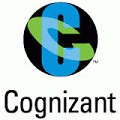Service objectives
The following list represents the Key Service Objectives (KSO) for the Appleton Greene Operational Excellence service.
Benchmarking Assessment
 Our functional and process benchmarking services provide your executives with insight they need to evaluate performance relative to business value and strategy; identify, quantify and prioritize process improvement opportunities and develop a factual basis for driving change. Benchmarking improves performance by identifying and applying best demonstrated practices. Managers compare the performance of their products or processes externally with those of competitors and best-in-class companies and internally with other operations within their own firms that perform similar activities. The objective of Benchmarking is to find examples of superior performance and to understand the processes and practices driving that performance. Companies then improve their performance by tailoring and incorporating these best practices into their own operations—not by imitating, but by innovating.
Our functional and process benchmarking services provide your executives with insight they need to evaluate performance relative to business value and strategy; identify, quantify and prioritize process improvement opportunities and develop a factual basis for driving change. Benchmarking improves performance by identifying and applying best demonstrated practices. Managers compare the performance of their products or processes externally with those of competitors and best-in-class companies and internally with other operations within their own firms that perform similar activities. The objective of Benchmarking is to find examples of superior performance and to understand the processes and practices driving that performance. Companies then improve their performance by tailoring and incorporating these best practices into their own operations—not by imitating, but by innovating.
Strategic Planning
 Understanding an enterprise’s IT requirements and providing innovative IT solutions are essential to keeping a business flourishing. An IT strategic plan based on a shared vision with stakeholders is critical to any successful enterprise and requires continual updating. The three building blocks for constructing an IT strategic plan are performing an IT assessment to understand the issues, problems, and needs for delivering outstanding service to customers; aligning the IT strategy with business drivers, management expectations, and customer requirements to ensure that the enterprise receives the right solutions; and formulating initiatives to improve business performance and IT services over time. Key elements common to most enterprises, such as IT assessment approach, business drivers, and management and customer expectations, can serve as a baseline for constructing the IT strategic plan.
Understanding an enterprise’s IT requirements and providing innovative IT solutions are essential to keeping a business flourishing. An IT strategic plan based on a shared vision with stakeholders is critical to any successful enterprise and requires continual updating. The three building blocks for constructing an IT strategic plan are performing an IT assessment to understand the issues, problems, and needs for delivering outstanding service to customers; aligning the IT strategy with business drivers, management expectations, and customer requirements to ensure that the enterprise receives the right solutions; and formulating initiatives to improve business performance and IT services over time. Key elements common to most enterprises, such as IT assessment approach, business drivers, and management and customer expectations, can serve as a baseline for constructing the IT strategic plan.
Competency Center
 Competency Centers or Centers of Excellence is an operating model that strives to continually create value for customers, employees and key stakeholders by improving operations and business performance through a holistic, standardized management methodology and framework across the entire organization. It is an organization within the larger organization, primarily centered on the collection of specialized skills to encourage and facilitate collaboration. It also helps manage best practices for a specific functional area with an aim to increase business success and productivity. The CoE framework encompasses all the strategic assets – people, processes and technology, to govern how the organizational unit engages and delivers highly effective and efficient solutions to the larger organization in a repeatable manner.
Competency Centers or Centers of Excellence is an operating model that strives to continually create value for customers, employees and key stakeholders by improving operations and business performance through a holistic, standardized management methodology and framework across the entire organization. It is an organization within the larger organization, primarily centered on the collection of specialized skills to encourage and facilitate collaboration. It also helps manage best practices for a specific functional area with an aim to increase business success and productivity. The CoE framework encompasses all the strategic assets – people, processes and technology, to govern how the organizational unit engages and delivers highly effective and efficient solutions to the larger organization in a repeatable manner.
Portfolio Rationalization
 To improve customer service, reduce COGS and deliver shareholder value, enterprises need a well-planned and executed application portfolio rationalization program that visualizes the current state, identities high potential optimization opportunities and defines an actionable roadmap to support growth and achieve operational efficiency objectives. To realize the benefits from a Portfolio Rationalization initiative, the first step is to prioritize projects in the enterprise program management roadmap along with instituting proper governance to capture the value for both the business and IT. In addition, the governance model should include an architecture review board to enforce compliance with the blueprint to avoid application portfolio deterioration over time. Lastly, the application and infrastructure inventory that was built through the ITPR initiative should be maintained and refreshed regularly. Too often, companies belatedly discover that existing inventory is not up-to-date or reliable, requiring them to start their portfolio assessment from scratch.
To improve customer service, reduce COGS and deliver shareholder value, enterprises need a well-planned and executed application portfolio rationalization program that visualizes the current state, identities high potential optimization opportunities and defines an actionable roadmap to support growth and achieve operational efficiency objectives. To realize the benefits from a Portfolio Rationalization initiative, the first step is to prioritize projects in the enterprise program management roadmap along with instituting proper governance to capture the value for both the business and IT. In addition, the governance model should include an architecture review board to enforce compliance with the blueprint to avoid application portfolio deterioration over time. Lastly, the application and infrastructure inventory that was built through the ITPR initiative should be maintained and refreshed regularly. Too often, companies belatedly discover that existing inventory is not up-to-date or reliable, requiring them to start their portfolio assessment from scratch.
Change Acceleration
 Organizations often do not emphasize the need to plan, lead and manage the human side of implementing strategic change. Our organizational change acceleration services help clients create an environment for successful and sustained change adoption. We partner with clients to design and implement their change strategies and actions and facilitate the quick realization of their business objectives. We provide the systematic architecture for leading and managing change based on structured organizational change management principles, and we build a client’s capabilities to lead and manage change in both the short- and long-term. We provide change management consulting for: Large scale IT implementations; E Governance; Business Process Re-engineering; Mergers & Acquisitions and Business Process Outsourcing.
Organizations often do not emphasize the need to plan, lead and manage the human side of implementing strategic change. Our organizational change acceleration services help clients create an environment for successful and sustained change adoption. We partner with clients to design and implement their change strategies and actions and facilitate the quick realization of their business objectives. We provide the systematic architecture for leading and managing change based on structured organizational change management principles, and we build a client’s capabilities to lead and manage change in both the short- and long-term. We provide change management consulting for: Large scale IT implementations; E Governance; Business Process Re-engineering; Mergers & Acquisitions and Business Process Outsourcing.
This service is primarily available to the following industry sectors:

Banking & Financial Services
Imagine the traditional bank competing against a truly global, multi-service, low-cost, digital bank: customers accessing their accounts through their mobile phones, paying with a tap on their wearables, sweeping savings to an ETF portfolio designed by an AI (artificial intelligence) engine based on their savings goals and risk appetite, offering no-fee, cross-borderpayments. Imagine if you faced a competitor bank like this, with a low and nimble footprint, prototyping new services quickly, managing regulatory compliance transparently, using an AI system to limit fraud losses, and hedging currency risk using crypto currencies. This competitor does not exist today. But in the next few years, it is a very real possibility. Now what? The financial services industry has seen drastic technology-led changes over the past few years. Many executives look to their IT departments to improve efficiency and facilitate game-changing innovation – while somehow also lowering costs and continuing to support legacy systems. Meanwhile, FinTech start-ups are encroaching upon established markets, leading with customer friendly solutions developed from the ground up and unencumbered by legacy systems. Customers have had their expectations set by other industries; they are now demanding better services, seamless experiences regardless of channel, and more value for their money. Regulators demand more from the industry too, and have started to adopt new technologies that will revolutionize their ability to collect and analyze information. And the pace of change shows no signs of slowing. Is your company ready?

Insurance
The insurance industry—traditionally cautious, heavily regulated, and accustomed to incremental change—confronts a radical shift in the age of automation. With the rise of digitization and machine learning, insurance activities are becoming more automatable and the need to attract and retain employees with digital expertise is becoming more critical. They need more flexible technology—and tighter cost controls. They need higher performance from their workforce—and more employee engagement. They need to retain current talent—and acquire entirely new capabilities in data analysis, mobile technologies and social media. And they need to protect their current competitive advantages, while rethinking business models and launching new ideas. Organizations need the capacity to meet challenges as they arise: new regulations, capital-market volatility, aggressive pricing practices, or novel products and channels. The ability to do so rests on four disciplines – cycle time reduction, error rate reductions, productivity and customer satisfaction – that together form the lean management system, supported by a cohesive set of tools and management methods that nurture a culture of continuous improvement.

Internet
The internet is changing the way we live, work, produce and consume. With such extensive reach, digital technologies cannot help but disrupt many of our existing models of business and government. As we enter the age of the Internet Revolution, a technological transformation driven by digitization, the challenge is to manage this seismic change in a way that promotes the long-term health and stability of the internet. The four key themes that will be critical to the emerging new internet revolution are: 1. Transformation – The internet is reshaping public and private sector structures, creating new markets for business. But organizations will also need to strengthen the security of their customers’ data. 2. Access – There are still more people offline than on. The United Nations has included universal affordable internet access in its Global Goals, which collectively aim to reduce poverty, advance health and education and improve the environment. The goals recognize that the internet can aid global development by connecting neglected and underserved communities around the world. 3. Governance – With technology evolving at breakneck speed, regulatory frameworks often lag behind. The rules that govern the use of all forms of data on the internet need to be relevant and appropriate to the pace of technological change. 4. Security – For organizations and individuals to have the confidence to conduct transactions and exchange information, the internet has to be secure. This means that as the amount of industrial data grows, there will be greater need for digital security services focused on protecting the integrity of devices connected to the industrial internet.

Healthcare
To most people, “the robot doctor” sounds like the title of a terrible sci-fi movie. But it’s an integral part of the future of health care. The data revolution is already transforming the health care landscape, and if you want to help shape its future (and make a profit in the process), be prepared to capitalize on these five exciting trends: 1. Preventive Medicine Will Soar – As information from electronic medical records becomes available in the cloud, health care tasks are moving online. And the digitalization of diagnoses has implications for predictive and preventive medicine. 2. Health Care Will Go From General To Personal – The “Internet of Things” will connect devices that can support predictive medicine and products that link a patient’s wellness to her lifestyle will go from luxury to necessity. 3. Robots Will Be Optimized For Health Tasks – With the development of predictive data solutions will come the creation of devices and robots that can complete health care tasks on their own. 4. Collaboration Will Destroy Silos – Entrepreneurs who can collaborate with researchers, health care organizations and other industry players will be able to innovate successfully and find gaps in technology. 5. Doctors Will Have Access To More Data – Physicians are already using computers and other high-tech devices and the use of these devices is improving health care. As data becomes more readily available, extensive and personalized, it will revolutionize the way doctors diagnose disease and treat patients. All these trends have one thing in common: data. By building a strong backbone of data in your company, you will reinforce your ability to innovate in line with the health care industry. And by seizing the opportunities provided by technological advancement, you can become this era’s innovator. “The robot doctor” doesn’t sound so improbable now, does it?
Bronze Service

Monthly cost: USD $1,500.00
Time limit: 5 hours per month
Contract period: 12 months
Bronze service includes:
01. Email support
02. Telephone support
03. Questions & answers
04. Professional advice
05. Communication management

SERVICE DESCRIPTION
The Bronze Client Service (BCS) for Operational Excellence provides clients with an entry level option and enables client contacts to become personally acquainted with Mr. Sundaram over a sustainable period of time. We suggest that clients allocate up to a maximum of 5 Key Employees for this service. Your Key Employees can then contact the consultant via email, whenever they feel that they need specific advice or support in relation to the consultant’s specialist subject. The consultant will also be proactive about opening and maintaining communications with your Key Employees. Your Key Employees can list and number any questions that they would like to ask and they will then receive specific answers to each and every query that they may have. Your Key Employees can then retain these communications on file for future reference. General support inquiries will usually receive replies within 48 hours, but please allow a period of up to 10 business days during busy periods. The Bronze Client Service (BCS) enables your Key Employees to get to know their designated Appleton Greene consultant and to benefit from the consultant’s specialist skills, knowledge and experience.
Silver Service

Monthly cost: USD $3,000.00
Time limit: 10 hours per month
Contract period: 12 months
Bronze service plus
01. Research analysis
02. Management analysis
03. Performance analysis
04. Business process analysis
05. Training analysis

SERVICE DESCRIPTION
The Silver Client Service (SCS) for Operational Excellence provides more time for research and development. If you require Mr. Sundaram to undertake research on your behalf, or on behalf of your Key Employees, then this would understandably require more time and the Silver Client Service (SCS) accommodates this. For example, you may want your consultant to undertake some research into your management, performance, business, or training processes, with a view towards providing an independent analysis and recommendations for improvement. If any research and development, or business analysis is required, then the Silver Client Service (SCS) is for you.
Platinum Service

Monthly cost: USD $6,000.00
Time limit: 20 hours per month
Contract period: 12 months
Bronze/Silver/Gold service plus
01. Project planning
02. Project development
03. Project implementation
04. Project management
05. Project review

SERVICE DESCRIPTION
The Platinum Client Service (PCS) for Operational Excellence is our flagship service and will be required if you need Mr. Sundaram to facilitate the planning, development, implementation, management, or review of a particular project relating to his specialist subject, which would obviously require more time and dedication. This service enables you to reserve up to 12.5% of the consultant’s working month and provides a more hands-on service as and when required. If you need more time than this, then this can always be arranged, subject of course to the consultant’s ongoing availability. The benefit of having an external consultant involved in projects is they provide an independent perspective and are not influenced by internal politics, day-to-day responsibilities, or personal career interest. They provide objectivity, specific knowledge, skills and experience and will be entirely focused upon the tasks at hand. The Platinum Client Service (PCS) will provide your organization with a valuable resource as and when you need it.
Benefits
E-business
- Cloud virtualization
- Collaboration framework
- Service ubiquity
- E-commerce strategy
- Presence design
- Competing online
- Lower costs
- Personalization
- Content optimization
- Channel integration
Information Technology
- Business alignment
- Lower costs
- Continuous reductions
- Higher quality
- Improved visibility
- Operational efficiencies
- Asset optimization
- Strategic library
- Best practice
- Technology roadmap
Management
- Clear direction
- Management goals
- Improved communication
- Enhanced teamwork
- Change acceptance
- Increased innovation
- Corporate goals
- Performance management
- Team productivity
- Increased collaboration
Clients
This service’s current clients or employers include:

KPMG
KPMG is a professional service company and one of the Big Four auditors, along with Deloitte, EY and PwC. Seated in Amsterdam, the Netherlands, KPMG employs 189,000 people and has three lines of services: audit, tax, and advisory. Its tax and advisory services are further divided into various service groups.

Cognizant
Headquartered in Teaneck, New Jersey (U.S.), Cognizant combines a passion for client satisfaction, technology innovation, deep industry and business process expertise and a global, collaborative workforce that embodies the future of work. With over 50 delivery centers worldwide and approximately 255,800 employees as of September 30, 2016, Cognizant is a member of the NASDAQ-100, the S&P 500, the Forbes Global 2000 and the Fortune 500 and is ranked among the top performing and fastest growing companies in the world.

Transigma
Headquartered in Shelton CT, Transigma is a strategic consultancy and leading enterprise benchmarking and best practices implementation firm to global companies. Services include business transformation, enterprise performance management, regulatory and compliance audits and global business services. Transigma also provides dedicated expertise in business strategy, operations, finance, human capital management, strategic sourcing, procurement, and information technology, including its award-winning Oracle EPM and SAP practices
Locations
This service is primarily available within the following locations:

New York NY
The economy of the State of New York is reflected in its gross state product in 2015 of $1.44 trillion, ranking third in size behind the larger U.S. states of California and Texas. If New York State were an independent nation, it would rank as the 12th or 13th largest economy in the world, depending upon international currency fluctuations. However, in 2013, the multi-state, New York City-centered Metropolitan Statistical Area produced a gross metropolitan product (GMP) of nearly US$1.39 trillion, while in 2012, the corresponding Combined Statistical Area generated a GMP of over US$1.55 trillion, both ranking first nationally by a wide margin and behind the GDP of only twelve nations and eleven nations, respectively. New York City and the surrounding New York metropolitan area dominate the economy of the state. Manhattan is the leading center of banking, finance, and communication in the United States and is the location of the New York Stock Exchange (NYSE) on Wall Street. Many of the world’s largest corporations locate their home offices in Manhattan or in nearby Westchester County. Manhattan contained over 500 million square feet (46.5 million m2) of office space in 2015, making it the largest office market in the United States, while Midtown Manhattan, with nearly 400 million square feet (37.2 million m2) in 2015, is the largest central business district in the world.

Trenton NJ
Trenton was a major manufacturing center in the late 19th and early 20th centuries. One relic of that era is the slogan “Trenton Makes, The World Takes”, which is displayed on the Lower Free Bridge (just north of the Trenton–Morrisville Toll Bridge). The city adopted the slogan in 1917 to represent Trenton’s then-leading role as a major manufacturing center for rubber, wire rope, ceramics and cigars. Along with many other United States cities in the 1970s, Trenton fell on hard times when manufacturing and industrial jobs declined. Concurrently, state government agencies began leasing office space in the surrounding suburbs. State government leaders (particularly governors William Cahill and Brendan Byrne) attempted to revitalize the downtown area by making it the center of state government. Between 1982 and 1992, more than a dozen office buildings were constructed primarily by the state to house state offices. Today, Trenton’s biggest employer is still the state of New Jersey. Each weekday, 20,000 state workers flood into the city from the surrounding suburbs. Trenton is the capital city of the U.S. state of New Jersey and the county seat of Mercer County. It was briefly the capital of the United States. The city’s metropolitan area is grouped with the New York metropolitan area by the United States Census Bureau, but directly borders the Philadelphia metropolitan area and is part of the Federal Communications Commission’s Philadelphia Designated Market Area. As of the 2010 United States Census, Trenton had a population of 84,913, making it the state’s 10th-largest municipality. The Census Bureau estimated that the city’s population was 84,034 in 2014.

Hartford CT
Hartford is the capital of the U.S. state of Connecticut. It was the seat of Hartford County until Connecticut disbanded county government in 1960. As of the 2010 Census, Hartford’s population was 124,775, making it Connecticut’s third-largest city after the coastal cities of Bridgeport and New Haven. Census Bureau estimates since then have indicated Hartford’s fall to fourth place statewide, as a result of sustained population growth in the coastal city of Stamford. Hartford is nicknamed the “Insurance Capital of the World”, as it hosts many insurance company headquarters and insurance is the region’s major industry. The city was founded in 1635 and is among the oldest cities in the United States. It is home to the nation’s oldest public art museum (Wadsworth Atheneum), the oldest publicly funded park (Bushnell Park), the oldest continuously published newspaper (The Hartford Courant), and the second-oldest secondary school (Hartford Public High School). It also is home to Trinity College, a private liberal arts college, and the Mark Twain House where the author wrote his most famous works and raised his family, among other historically significant attractions. Twain wrote in 1868, “Of all the beautiful towns it has been my fortune to see this is the chief.” Following the American Civil War, Hartford was the richest city in the United States for several decades. Today, Hartford is one of the poorest cities in the nation, with 3 out of every 10 families living below the poverty line. In sharp contrast, the Hartford metropolitan area is ranked 32nd of 318 metropolitan areas in total economic production and 7th out of 280 metropolitan statistical areas in per capita income. Highlighting the socio-economic disparity between Hartford and its suburbs, 83% of Hartford’s jobs are filled by commuters from neighboring towns who earn over $80,000, while 75% of Hartford residents who commute to work in other towns earn just $40,000.

London UK
London, the capital city of the United Kingdom, is the world’s leading financial center for international business and commerce and is one of the “command centers” for the global economy. The economy of London is dominated by service industries, particularly financial services and associated professional services, which have strong links with the economy in other parts of the United Kingdom and internationally. According to the Brookings Institution, in 2011 London had the fifth largest metropolitan economy in the world. By way of comparison, London’s economy is roughly the same size as that of Sweden or Iran. With an estimated 8,615,246 residents in 2015, London is the most populous region, urban zone and metropolitan area in the United Kingdom. London generates approximately 22 per cent of the UK’s GDP. 841,000 private sector businesses were based in London at the start of 2013, more than in any other region or country in the UK. 18 per cent are in the professional, scientific and technical activities sector while 15 per cent are in the construction sector. Many of these are small and medium-sized enterprises.
London’s largest industry remains finance, it is the largest financial exporter in the world which makes a significant contribution to the UK’s balance of payments. In the 2017 Global Financial Centres Index, London was ranked as having the most competitive financial center in the world, alongside cities such as New York City, Singapore, Hong Kong, Tokyo, San Francisco, Chicago, Sydney, Boston, and Toronto. The City of London is home to exchanges, banks, brokers, investment managers, pension funds, hedge funds, private equity firms, insurance companies and reinsurance markets. London is notable as a centre of international finance where foreign participants in financial markets come to deal with one another. It is also home to the Bank of England, the second oldest central bank in the world, and the European Banking Authority, although the latter is expected to move following the Brexit referendum of 2016. Other key institutions are Lloyd’s of London for insurance, the Baltic Exchange for shipping
Financial services in London benefited from the UK’s membership of the European Union, although this may end following the decision of the United Kingdom to leave the European Union. The position of London as a financial center may be further enhanced by the EU-US Free Trade Agreement currently under negotiation or a free trade agreement between the UK and the USA.

Chennai IN
Recent estimates of the economy of the entire Chennai Metropolitan Area have ranged from US$58.6 to US$66 billion (PPP GDP), ranking it from the fourth- to sixth-most productive metro area of India, and the third highest GDP per capita. The metropolitan area doesn’t include the nearby industrial zones of Sholinganallur, Siruseri, Oragadam and Sriperumbudur. Chennai has an economic base anchored by the automobile, software services, medical tourism, hardware manufacturing and financial services. Other important industries include petrochemicals, textiles and apparels. The Chennai Port and Ennore Port contribute greatly to its importance. The city has a fully computerized stock exchange called the Madras Stock Exchange. Chennai was recently rated as having the highest quality of life among Indian cities ahead of the other three metros and Bangalore, based on the “Location Ranking Survey” conducted by ECA International. Chennai has improved its global ranking to 138 in 2006–07 from 179 in 2002–03. It is now ranked at 26th position in Asia in terms of livability, up from 31st rank in 2002–03. According to a 2007 worldwide quality of life survey done by Mercer, Chennai received the second highest rating in India, with New Delhi scoring the highest, and came in at a relatively low 157th worldwide. The reason was attributed to poor health and sanitation, and the increasing air pollution. It has the distinction of being called The Detroit of Asia.
Chennai has been tagged as the Banking Capital of India,for its vibrant banking culture and trading.The city has emerged as an important center for banking and finance in the World Market. Chennai boasts a transaction volume which serves 900 million people across the World through Back office operation. At present, it is home to four large national level commercial banks and many regional and state level co-operative banks. Several large financial companies and insurance companies are headquartered in Chennai. Prominent financial institutions, including the World Bank, Standard Chartered Bank, ABN AMRO, Bank of America, The Royal Bank of Scotland, Goldman Sachs, Barclays, HSBC, Deutsche Bank, ING Group, Allianz, Sumitomo Mitsui Banking Corporation, The Bank of Tokyo-Mitsubishi UFJ, Abu Dhabi Commercial Bank, Asian Development Bank, Credit Suisse, BNP Paribas Fortis, Deutsche Bank and Citibank have back office and Development Center operations in the city. The city serves as a major back-up center for operations of many banks and financial companies of the world.
Achievements

GE Capital
Benchmarking Assessment – Mr. Sundaram’s benchmarking analysis cut through the noise of traditional measurement and gave us a clear picture of what value was being created by management and staff. It provides the us with useful, timely and relevant data in order to compare ourselves with industry peers around the world.

Merck
IT Strategic Planning – Mr. Sundaram delivered a first-class IT strategy in a fraction of the time and cost that we had expected. The strategy and plans allowed us to build credibility and gain support for the senior leadership. It successfully made the case for bold moves to drive accelerated growth in the business.

BMW
Competency Centres – Mr. Sundaram provided both methodology and the people to design and implement Competency Centers or Centers of Excellence projects in organizational areas such as Lean Six Sigma, Program Management Office, Strategic Sourcing, BI, Middle and Back Office Operations etc. Their knowledge and experience run deep and are flexible in adapting to ever-changing requirements.
Personal Profile
Mr Chicles is an approved Certified Learning Provider (CLP) at Appleton Greene who is a business leader and strategist with broad experience in the global multi-industrial, aerospace and defense sectors. He is a seasoned operational leader of global industrial businesses, leading transformational strategies in highly competitive markets.
As a senior, C-suite strategist for multiple major industrial corporations he has led multiple mergers, acquisitions, divestitures and restructurings, as well as corporate break-ups and spin-offs. He has a distinguished track record of successful transformations of complex organizations in dynamic and uncertain market conditions while engendering the trust and buy-in of employees, customers, vendors, owners, corporate leadership and boards of directors.
A highly engaged leader at the personal and team level he has demonstrated the ability to engender effective senior teams and boards. He’s also an active mentor, teacher and community leader.
Mr Chicles is an active board member with AES Seals, global leader in sustainable reliability engineering, and Micro Technologies Inc, an electronics and advanced manufacturing company. He is a principal partner with ProOrbis Enterprises®, a management science consultancy with premier clients such as the US Navy and PwC, as well as the principal of Xiphos Associates™, a management and M&A advisory. Recently, he served as Board Director and Chairman of Global Business Development with Hydro Inc. the largest independent pump and flow systems engineering services provider in the world.
He was President of ITT’s Industrial Process / Goulds Pumps business segment a global manufacturer of industrial pumps, valves, monitoring and control systems, and aftermarket services for numerous industries with $1.2 billion in revenue, 3,500 employees and 34 facilities in 17 countries. Preceding this role he served as Executive Vice President of ITT Corporation overseeing the creation of a newly conceived ITT Inc. following the break-up of the former ITT Corporation to establish its strategy and corporate functions such as HR, communications, IT and M&A, building the capabilities, policies and organizations for each.
He joined ITT Corporation’s executive committee as its strategy chief in 2006 and instituted disciplined strategic planning processes and developed robust acquisition pipelines to respond to rapidly changing markets. Created successful spin-offs of 2 new public corporations Exelis Inc. and Xylem Inc. ITT Corporation was named one of “America’s Most Respected Corporations” by Forbes for exemplary management and performance during his tenure there.
Before joining ITT, Mr Chicles served as Vice President of Corporate Business Development and head of mergers and acquisitions for American Standard / Trane Companies, where he initiated and closed numerous transactions and equity restructurings globally.
Additionally, he created and led the corporate real estate function which entailed more than 275 real estate transactions around the world.
He began his career at Owens Corning rising through the ranks in various operational roles to Vice President of Corporate Development.
Recently, he taught advanced enterprise strategy at Stevens Institute of Technology as an adjunct professor and still supports start-ups through the Stevens Venture Center. He continues to be active as the Founding Board Member with several successful start-up technology businesses and non-profit organizations. A community leader, Mr Chicles has held the role of President of the Greek Orthodox Cathedral in Tenafly, N.J., He also led trips abroad to Cambodia and Costa Rica to build sustainable clean-water solutions and affordable housing.
His formal education includes earning a Masters of Business Administration from The Wharton School at the University of Pennsylvania, and a Bachelors in Finance from Miami University.
(CLP) Programs

Appleton Greene corporate training programs are all process-driven. They are used as vehicles to implement tangible business processes within clients’ organizations, together with training, support and facilitation during the use of these processes. Corporate training programs are therefore implemented over a sustainable period of time, that is to say, between 1 year (incorporating 12 monthly workshops), and 4 years (incorporating 48 monthly workshops). Your program information guide will specify how long each program takes to complete. Each monthly workshop takes 6 hours to implement and can be undertaken either on the client’s premises, an Appleton Greene serviced office, or online via the internet. This enables clients to implement each part of their business process, before moving onto the next stage of the program and enables employees to plan their study time around their current work commitments. The result is far greater program benefit, over a more sustainable period of time and a significantly improved return on investment.

Appleton Greene uses standard and bespoke corporate training programs as vessels to transfer business process improvement knowledge into the heart of our clients’ organizations. Each individual program focuses upon the implementation of a specific business process, which enables clients to easily quantify their return on investment. There are hundreds of established Appleton Greene corporate training products now available to clients within customer services, e-business, finance, globalization, human resources, information technology, legal, management, marketing and production. It does not matter whether a client’s employees are located within one office, or an unlimited number of international offices, we can still bring them together to learn and implement specific business processes collectively. Our approach to global localization enables us to provide clients with a truly international service with that all important personal touch. Appleton Greene corporate training programs can be provided virtually or locally and they are all unique in that they individually focus upon a specific business function. All (CLP) programs are implemented over a sustainable period of time, usually between 1-4 years, incorporating 12-48 monthly workshops and professional support is consistently provided during this time by qualified learning providers and where appropriate, by Accredited Consultants.
Executive summary

Acquisitive Growth
In today’s context of changing markets, technologies and business models, and in conjunction with historic levels of available capital, acquisitive growth has emerged as an increasingly compelling approach to transformational growth. However, as has been empirically proven growth through acquisitions is fraught with pitfalls and inherently risky. Successfully acquisitive growth requires the confluence of many factors that go beyond the traditional phased steps of a typical process. In my experience success is a function of bringing together the elements of people, processes, and technologies into a set of capabilities that are custom-made for an organization’s particular strengths, circumstances and aspirations. Winning in today’s dynamic markets demands bold, unique and sustainable strategies. The following are the stages of such an approach that I have found to create high probability, profitable growth that stands the test of time.
Additionally, while the M&A industry has many advisors available, they tend not to be operating executives who have lived through all the elements I will lay out below. Many simplistic guidelines exist, however what its clear is that the difference between success and failure with acquisitive growth is not in rote adherence to some set of processes, rather it is found in the combination of process discipline and strong application of experiential, practical knowhow. The nature of this knowhow is to apply and allocate the elements below in a smart, efficient manner to achieve exemplary outcomes for the specific client’s unique situation and circumstances.
Strategy Development: Whether at the corporate level or in a specific business unit, clients would be taken through steps to clarify the markets and segments where they currently compete and where they want to go in the future, what differentiates them from competition, where capabilities need to be refined or built, and the various functional elements (e.g. systems, processes, structures, etc.) critical to sustain profitable growth. Approach would be a combination of review of current strategies/capabilities, interviews and facilitated discussions and structured workshops. Outcomes might be a strategy to bring a particular business into a new growth phase or to meet changing competitive environments, or at the enterprise level might entail “platform building” whereby new businesses, sectors or legs are build from the ground up through foundational initial acquisitions and subsequent organic and inorganic initiatives.
Market Focus: Where will we hunt for acquisition targets? If a company allows too-wide of a scope will find themselves suffering from expensive resource drains/distractions and/or dilute efforts. Therefore, following the alignment of enterprise/business strategies the process will seek to focus the market segments and the business criteria to qualify a company to be elevated to possible target.
Research Possible Targets: Simply put, take the descriptions and criteria from above and create lists of potential targets that might fit. Each such company is researched for available information, any currently available knowledge the client might have, etc. Output is a gross list of possible targets.
Target Approach: Utilizing a number of possible approaches, one that is appropriate for the client is determined. For example, some companies may have business development or sales teams who could participate in this stage, or on the other hand for reasons such as confidentiality, resource scarcity, etc this might need to be put into the hands of specific individuals (senior executives, dedicated M&A executives, 3rd party services, etc.). Each company is different, so this is an exercise of matching needs with capabilities. The objective is to screen the gross target list to elminate those who have “killer facts” such as big contingent liabilities, prohibitive complexity such as a company with a complex ownership structure, our any other aspects that renders a target not acceptable for the next step.
Cultivation: This is a very critical part of the overall process. The essence of this authentic, genuine and meaningful relationship-buidling which requires a combination of individuals with certain skill-sets to ‘sell’ the prospects on being acquired, patience and persistence. I have many approaches, processes and techniques that I have and continue to use to great effect in this regard. Output is a short list of interested targets who have moved to active discussions and in-person meetings.
Target Assessment: During the cultivation phase as it gets more advanced, a critical success factor for effective acquisitive growth is the ability to narrow the list with limited amounts of information. This is important because the next phase is quite intensive so any company can not practically thoroughly assess all such targets. In other words, how does a client gain the insights needed to do this? Some might consider this the ‘phase I due diligence’ whereby, prior to the engagement of expensive resources such as lawyers, accountants, etc., an overview of a target’s current status is determined. Through structured and open discussions, the client engages in discussions with the targets to learn as much as possible..
Preliminary Offer: Structuring of a term sheet or letter of intent based on finding to date. Depending on these findings, certain terms may be included to lay out a) value expectations; b) focus for due diligences and commitment to support it; and c) various legal terms typical for these agreements. This tend to be non-binding agreements meant to establish exclusivity of dealings for a period of time, high level terms that both parties agree to, and confidentiality. Given my background, I have the abilility to craft these documents with minimal legal cost.
Due Diligence: This is yet another element of acquisitions that can take several different forms. Depending on the situation and capabilities of both clients and targets, due diligence activites tend to have different scopes and approaches that match each particular circumstance. A simple example would be a private company target versus a public company. With the latter, sellers often limit potential acquirers to only publicly available information whereas private companies may have limited information at their disposal. Therefore, each approach must be designed for purpose, with the output being a customized plan for a particular target. This leads to both more efficient and cost effective processes as well as deeper insights to help with final decisions.
Deal Making: After the due diligence phase, and with a set of terms already agreed, the negotiations begin to finalized the terms of value, liabilities and the myriad legal and busses considerations that must be addressed and finalized. Whether as chief negotiator or as a trusted advisor to the same, I would bring my experience and talent to bear on this phase as well as some structured approaches/guidelines.
Integration Planning: Concurrent with the commencement of due diligence, full attention is required to determine the structure, resources, plans and teams for post-closing integration. Specific approaches and processes would be employed here to ensure that a proper integration leader is named (critical), robust but prioritized integration plans (e.g. IT and Finance integration might be a first priority for some companies), organizational and assimilation plans, and specific actions in several other area. Among the more difficult and critical elements of integration is culture. While culture is a key consideration in the pre-offer phases, it tends to be among the more challenging aspects to successful acquisitions and an area where experience from a career of hands-on accountability of acquisitions brings valuable insights. Several pro-active approaches can be introduced to the clients to determine which is best to employ with any particular integration.
Execution: From plans to execution requires much more than a roadmap. While such roadmaps are critical, it is the confluence of leadership and human capital, prioritized focused actions to achieve specific results, and finally sustainable integration to bring into the client’s company the full potential of the value creation possible. Tools exist and can be created to provide structure and management support to achieve this consistently.

Important And Strategic Elements Of A Growth By Acquisition Approach
This program has thus far concentrated on the role that acquisition strategies play in driving growth.
However, this assumes that the acquisitions are carried out properly on its own. Experience has shown that acquisitions may both produce and destroy value, with the execution of the transaction typically making the difference.
The following are crucial and strategic elements that support successful acquisitions:
• Considering strategic fit: Purchasing merely for the sake of purchasing is little more than management hubris. The target businesses should in some manner meet the needs of the buyer’s company strategy (i.e. product or service line, geographic reach, etc.).
• Addressing culture fit: Due to cultural mismatches between the two merging organizations, some of the largest mergers in history have failed. It is important to take into account a company’s culture because it directly affects how it creates value.
• Doing thorough due diligence: This guarantees that the buyer “looks beneath the hood” of the company they are buying and that the price they are looking to pay for the company reflects its intrinsic value.
• Integration: Even when the share purchase agreement’s ink dries, the deal is not finalized. The two businesses must now start an integration process to ensure that they grow into something greater than the sum of their individual parts.

Advantages Of Growth Acquisition
10 advantages of expanding your company through acquisition
If you’re deciding whether to enter into an acquisition contract, you might wish to take into account the following list of acquisition benefits:
1. Strengthens a failing business
The company you work for might be going through a period of underperformance, and an acquisition might be the answer. The ability to work together as a team rather than alone may be a key factor in the business’ success. As you get to share resources with the company you’re merging with, this can assist keep the business from failing.
2. Secure financing for growth
By making an acquisition, a company might gain access to money or other important assets that it might not otherwise have at its disposal. You can easily acquire these assets with the aid of an acquisition. The firm and its employees may benefit from collaborating with a company that has sufficient resources because the development of the enterprise is the ultimate objective.
3. Have access to skilled personnel of high caliber
An acquisition can aid in boosting both the amount and quality of employees who are knowledgeable about the demands of the company. The experienced staff often stays on the firm payroll after an acquisition is completed so they can integrate. Their business acumen contributes to the companies’ success after the merger.
4. Expand the company’s market.
The corporation may diversify its offerings of goods and services as a result of the acquisition. You can make a variety of goods and distribute them to various target consumers. An acquisition often aids in a company’s development and growth.
5. Increase market influence
When you enter a new market, making an acquisition might help you combine market forces and exercise control. The synergy it offers increases your market presence and market share. If you plan to establish branches or subsidiary businesses, an acquisition may assist you lessen competition and preserve market dominance.
6. Make sure more capital is available.
Because the company is now larger after an acquisition, access to cash is improved. Higher cash and funds are available and accessible as a result of the arrangement. Amountable capital may be extended to both companies according on the agreement the companies come to when making the purchase.
7. A decrease in training expenses
Through an acquisition, your company may be able to cut internal training costs by using resources from the other acquired company. The cost of employee training is not necessary if the acquired firm develops its resources. You can use the company’s resources, depending on their state of development, to train other employees so they can develop their skill set.
8. Boost the competitiveness of your business
A purchase can take care of the requirement to adhere to higher standards as a result of the development in technical advancements. By joining forces with a smaller company that possesses the required technologies, a larger corporation can maintain its competitive position. Long-term gains from this may accrue to both businesses.
9. Lower production expenses
If you can use another company’s production facilities, facilities, and storage space, merging with them can save your production expenses. Building these kinds of facilities can be expensive, but if the business expands, it might be necessary. Sharing resources could significantly affect the budget and production costs.
10. Enable you to fulfill stakeholder expectations
Stakeholders could have expectations for the company’s growth, and making an acquisition is an effective strategy to achieve such expectations. An purchase increases the likelihood of investment returns, which may gratify the stakeholders. The pressure from the stakeholders can be handled more easily by making an acquisition, and you can even surpass their expectations.

What To Watch Out For During The Entire Acquisition Growth Process
Investigating less evident problems within the target company is the goal of the due diligence procedure.
This ranges from contracts with sizable clients that are about to expire to potential legal proceedings resulting from past business decisions.
But there are a few things that the buyer should watch out for on a more strategic level.
They consist of the following:
• Culture: Even if this phrase keeps coming up, it is crucial to the success of M&As. The culture of the target company should be thoroughly researched by prospective buyers in order to have a sense of what they are getting into.
• Competitive Edge: Is the target company “plain vanilla” or does it engage in any activities that offer it a competitive advantage (which we’ll define as the capacity to produce above-market value over the long term)?
• Leadership: Would the target company’s leadership complement your own leadership team in a positive way? Spend some time with them while conducting your research to see whether this might be the case.
• Possibilities: Are there any prospects that the target firm can take advantage of that your business won’t be able to in the near future? Let’s say it’s because of a service or product line they offer that is expected to see rapid expansion.
• Synergies: Where do your two companies’ synergies lie? Are they really complementary, or does purchasing the target company actually run the danger of causing some of your company’s income streams to be cannibalized?
Program Objectives
The following list represents the Key Program Objectives (KPO) for the Appleton Greene Acquisitive Growth corporate training program.
Acquisitive Growth – Part 1- Year 1
- Part 1 Month 1 Business Assessment – Assessments can be incredibly valuable tools for organizations of all sizes. A comprehensive assessment methodology can help you evaluate your organization across multiple dimensions. But what are business assessments, what do they entail, and what are the benefits? Business assessments can help you identify areas of improvement and potential acquisitive growth. By taking a comprehensive approach, you can get an accurate picture of your organization’s strengths and weaknesses. Assessments can also help you develop actionable plans to improve your business. At their core, business assessments are all about providing clarity. When you’re feeling overwhelmed by the day-to-day details of running a business, it can be difficult to step back and get a clear picture of where your company is headed. That’s where assessments come in. By taking a comprehensive look at your company’s strengths and weaknesses, you can develop a clear road map for success. Assessments are an essential part of any business plan. By evaluating your company’s strengths and weaknesses, you can develop a roadmap for growth. Furthermore, assessments can help identify areas where your company may be at risk. By addressing these risks early on, you can avoid potential problems down the road. In addition, assessments can help you benchmark your company’s performance against others in your industry. This benchmarking process can give you valuable insights into areas where your company may need to improve. Ultimately, regular business assessments are a crucial tool for any organization that is looking to grow and thrive.
- Part 1 Month 2 Strategic Aspiration – A Winning Aspiration defines the purpose of your enterprise, its guiding mission and aspiration, in strategic terms. The first choice of the strategic choice cascade is winning aspirations. Here we ask, “what is our winning aspiration.” Strategically, our winning aspiration defines our purpose. Aspirations are a view of the future. Qualified with “winning,” it is the ideal future that we strive to achieve. Unless you deliberately set out to win, it is impossible to do so. A business that only wants to participate rather than succeed will invariably fall short of making the difficult decisions and large investments necessary to succeed. Aspirations that are too modest rather than lofty are much more harmful. Most businesses fail because they have low expectations.
- Part 1 Month 3 Segment Focus – Every company aspires to grow. But, in a market where competition is fierce, inorganic business growth requires insight and innovation. Segmenting the market and customers is among the most effective techniques to promote acquisitive growth. Yet as numerous businesses have shown, artful segmentation can result in a significant competitive advantage. The purpose of segmentation is to inform your marketing approach. Using this method, it is feasible to recognize and categorize groups of potential clients based on their shared preferences, needs, and interests. This method effectively identifies the demographics most likely to value a specific good or service you provide. Furthermore, it may assist you in positioning that service so that it outperforms that of your rivals.
- Part 1 Month 4 Targeted Offerings – Everything the market offers, be it products or services or any experience, is known as a market offering. Market offerings are also divided among themselves based on the nature of the offering. Read along to understand the role and value of market offerings. Individuals within a market have different wants and needs. As a result, businesses in the market offer various products and services. The ultimate aim of businesses is to fulfill all the varying wants and needs of the population. Providing better target offerings and standing out in the market will eventually lead to more loyal customers and a broader customer base. People expect businesses to add value to their lives in various ways, precisely the purpose of market offerings – satisfying customer needs.
- Part 1 Month 5 Target Pool – The purpose of this workshop is to map out the offerings that one wants to develop or enhance for the focus segments defined by WDP3. A target pool is at the intersection of Targeted Offerings and Focused Segments. For example, if your strategy is focused on growing a currently manufactured product beyond your existing markets, you’ll want to know all the players who make these products in the markets where you don’t currently play but aspire to. In this simple case, the target pool would be derived by researching the current suppliers in these focus segments and profiling them for certain things such as size, channels to market, etc. The approach of this workshop is to take the Targeted Offerings and in a way and ‘map’ them with the Segment Focus areas we developed previously. In reality you might only need to do one or few of these approaches, but the workshop can develop the understanding and skills to do this work, which is in essence synthesizing the ‘strategic play’ associated with any acquisitive growth program.
- Part 1 Month 6 Target Identification – Target identification in acquisitive growth is the process of identifying potential companies or assets that align with the strategic objectives of the acquiring company. It involves conducting comprehensive research, market analysis, and due diligence to evaluate various factors such as financial performance, growth potential, synergies, industry trends, competitive landscape, and cultural fit. The goal is to identify targets that offer strategic value and can contribute to the acquirer’s growth, profitability, market position, or diversification objectives. This process requires careful evaluation, consideration of risks, and alignment with the acquiring company’s overall M&A strategy to ensure successful integration and value creation.
- Part 1 Month 7 Target Approach – All business investors are “financial” investors – the real question is how “strategic” is their ability to leverage the assets of the target. Providing practical guidance on approaching a business target and conducting initial due diligence depends on the investor’s criterion, competencies, and execution bandwidth. At this point, you will have identified a target or group of targets and you are attempting to learn enough about the target to determine whether to proceed with developing a meaningful indication of interest. Of course, an active seller is likely prepared for the sale process and represented by an advisor who is postured to provide the financial and operating information necessary for investors to quickly determine the suitability of a deal (i.e., a pitchbook and defined protocols for communication and information access). However, many desirable targets may not be seeking a sale because business conditions are favorable, and their businesses have been managed to provide options to the owners regarding continued independence and turn-key ownership and management succession. If the former, you, as a prospective buyer may have already pinged on the radar of the seller, and if the later, you have mined for target opportunities and are ready for the next step to accomplish an acquisition.
- Part 1 Month 8 Deal Approach – The M&A landscape is becoming increasingly competitive and the balance of power is shifting further in favour of buyers. For attractive businesses, however, sellers may wish to make divestments through an auction process which is designed to elicit competitive bidding among interested parties to facilitate the sale of a business or stake in a company at the highest price and on the best possible terms. Not all transactions require collaboration between the buyer and the seller, however. In many instances, an auction is still a better approach than a negotiation. The trick is in knowing which process to use when. To make that choice, you need to clearly understand your potential buyers, the characteristics of the asset in question, your own priorities, and the relative importance of speed and transparency to obtaining the best price.
- Part 1 Month 9 Cultivation – (non-auction)
- Part 1 Month 10 Cultivation – (organized process)
- Part 1 Month 11 Confirm Target – Assuming initial contact and conversations go well, the acquirer asks the target company to provide substantial information (current financials, etc.) that will enable the acquirer to further evaluate the target, both as a business on its own and as a suitable acquisition target. After producing several valuation models of the target company, the acquirer should have sufficient information to enable it to construct a reasonable offer; Once the initial offer has been presented, the two companies can negotiate terms in more detail.
- Part 1 Month 12 Talent Assessment – Talent decisions can be made with less precision, discipline, and data but frequently require more complexity than other integration decisions (such as decisions about goods, markets, or customers). M&A leaders must “up their game” in talent assessment if they want to succeed. In the end, the acquirer must decide if current employees from the target (the acquired company) are the most qualified to carry out the goals of the new organization.
Methodology

Acquisitive Growth
It’s challenging to make this kind of acquisition successful. Seven fundamental operating principles are used by profitable corporate and financial purchasers, according to research. Almost all phases of the acquisition process, from the selection of candidates through post-merger management, are impacted by these ideas.
• Insist on cutting-edge operating tactics.
• If you can’t identify the leader, don’t make the deal.
• Provide top executives with significant incentives.
• Connect pay to variations in cash flow.
• Accelerate the rate of change.
• Encourage lively interactions between the board, managers, and owners.
• Employ the top acquirers.

Insist On Cutting-Edge Operating Tactics
High-profile leveraged buyouts like those of Duracell International, Uniroyal, and RJR Nabisco have garnered a lot of attention since the early 1980s. Prices, clever financial arrangements, and bargaining strategies have received a lot of attention. However, the other 2,200+ buyouts that took place during that time period and the fundamental changes in operational procedures that led to profitable outcomes for many of those businesses have received little attention. Although many observers think that LBO enterprises find hidden treasures in the market, more often than not, they only concentrate on enhancing operations.
Two acquisitions, Sunglass Hut International and Snapple Beverage Corporation, show that operating performance—rather than financial leverage, market timing, or industry selection—is the main driver of value creation in successful acquisitions.
Desai Capital focused on accelerating sales growth and developed a new strategy to achieve so when it acquired Sunglass Hut. By acquiring smaller stores in turn and introducing a new store model, Sunglass Hut has expanded from 150 locations to more than 800 since the initial acquisition in 1988. This growth has led to an astounding 37% yearly return. The business introduced a broad product selection rather than depending on two or three popular lines, replaced clerks with limited knowledge of sunglasses with educated customer-service specialists, and implemented a low-cost regional approach.

Another illustration of operating improvements is the 1992 purchase of Snapple by renowned financial acquirer Thomas H. Lee Company. Snapple launched an aggressive growth strategy based on quick global expansion and product range extensions shortly after the takeover. The business immediately established its production and distribution network since it anticipated that rivals will soon release their own natural teas and fruit juices. It entered into contractual agreements with bottling and distribution businesses that had excess production capacity, allowing it to launch its product one year before major rivals like Fruitopia (from the Minute Maid division of Coca-Cola Company) and achieve a competitive advantage.
As the Snapple case demonstrates, innovative operating methods help acquirers succeed in fiercely competitive markets like the American food and beverage sector. The takeaway: Don’t limit your search for success to high-growing industries.
